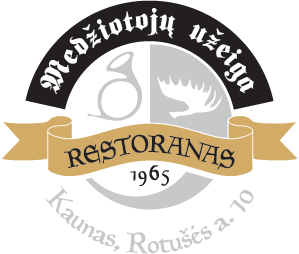
Cooking temperature
RECOMMENDATIONS FOR COOKING ROE DEER, VENISON, AND MOOSE
Roe deer, venison and moose – are lean, have an intense flavour and a delicate texture, so cooking them requires more attention than regular beef or pork. To achieve the best result, it is important to take into account the characteristics of each type, but there are also general rules that apply to all of these meats.
General rules
- Lean meat – due to its low fat content, it dries out quickly, so it is cooked for a short time.
- Carry-over cooking – after removing from the heat, the temperature rises by another 5–10 °C, so the meat must be removed from the heat before the desired level of doneness.
- Before serving, the meat must "rest" for 5-10 minutes so that the juices distribute and the meat is juicy.
- It is a good idea to let the meat sit at room temperature for at least 30 minutes before cooking so that the steak cooks evenly.
Differences between roe deer, venison and moose
Roe deer
- Internal meat temperature: 50–55 °C ( rare – medium rare )
- Features: Very lean, extremely tender, cooks quickly. Easiest to overcook.
- Recommendation: It is best to fry briefly, medium-rare – otherwise it will become dry.
Venison
- Internal meat temperature: 55–60 °C ( medium rare – medium )
- Features: Balanced – neither too soft nor too firm. Suitable for both quick frying and stewing.
- Recommendation: The most versatile of the three types of game. Suitable for both roasting and stewing.
Moose
- Internal meat temperature: 57–65 °C ( medium rare – medium )
- Characteristics: Of all three types of game, it has the most connective tissue. It is characterized by a firm structure.
- Recommendation: Best for longer marinating or braising. Steaks require a slightly higher temperature than other meats.
While all of these meats are lean and benefit from gentle cooking, roe deer is the most delicate and requires the most care, venison is the most versatile, and moose is the most robust, often needing longer preparation or marination.
The key to successful cooking lies in precise internal temperature, short cooking times, and allowing the meat to rest before serving.
RECOMMENDATIONS FOR COOKING WILD BOAR
Wild boar is a type of pork that comes from the wild. Compared to roe deer, venison, or moose, it contains more fat, yet remains leaner than domestic pork. This allows for slightly longer cooking times, but it’s still important not to overcook it—especially lean cuts like the loin or cutlet.
For both safety and texture, wild boar—unlike other wild meats—should be cooked to a higher internal temperature.
Wild boar doneness levels:
- Medium: Remove the wild boar from the heat when the internal temperature reaches 63–68 °C. Suitable for sirloin, cutlet.
- Well Done: Cook to 70-75°C. Recommended if you want the meat to be fully cooked or if you are in doubt about its freshness.
- Ground wild boar (minced meat, sausages): cook to 70–75 °C. Always cook thoroughly to ensure the meat is safe to consume.
- Stews (shoulder, neck, ribs): cook for a long time until the internal temperature reaches about 90–95 °C. This way the meat will become tender, juicy and easily “fall apart”.

